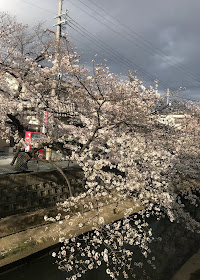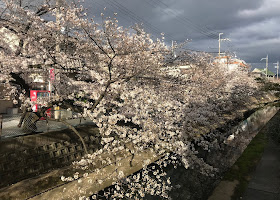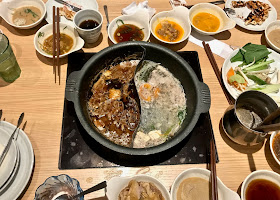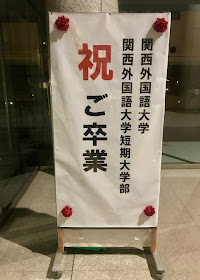Explorations and experiments in visual representations - multimodality, sensory ethnography, reflexivity, autoethnographic vignettes, ethnographic photography and ba...
Tuesday, March 31, 2020
Friday, March 27, 2020
To stop thinking about COVID-19, listen to the complaints of the young old man... Why do all my favorite izakaka/restaurants have to change or close?
Remnants of suki yaki/shabu shabu at the refurbished restaurant.
I liked the place the way it was...
Some places get refurbished... Some places change their menus... Some places make portions smaller and items more expensive... Some places lose the previous quality and it just doesn't taste good anymore... And some places close.
To be continued...
Thursday, March 26, 2020
"Japanese Artist Has Drawn Every Meal He’s Eaten for 32 Years: Behold the Delicious Illustrations of Itsuo Kobayashi"
Image and text from Open Culture, 3/24/2020.
Since the 1980s, Itsuo Kobayashi has drawn a picture of every single meal he eats. However notable we find this practice now, it would surely have struck us as downright eccentric back then. Kobayashi began drawing his food before the arrival of inexpensive digital cameras and cellphones, and well before the smartphone combined the two into the single package we now keep close at hand. We all know people who take camera-phone pictures of their meals, some of them with the regularity and solemnity of prayer, but how many of them could produce lifelike renderings of the food placed before them with only pen and paper?
"The Japanese outsider artist and professional cook, born in 1962, first began keeping food diaries as a teenager," Artnet's Sarah Cascone writes of Kobayashi. "In his 20s, he began adding illustrations of the dishes he made at work, and those he ate while dining out." When, at the age of 46, a "debilitating neurological disorder made it difficult for him to walk, leaving him largely confined to his home," Kobayashi began to focus on his food diaries even more intensely.
His subjects are now mostly "food deliveries — sometimes from restaurants, sometimes from his mother. And though his day-to-day existence rarely varies, he’s been pushing his practice in a new direction, creating a new series of pop-up paintings."
After 32 years of making increasingly detailed and realistic overhead drawings of his every meal — including such information as names, prices, flavor notes, and faithfully replicated restaurant logos — Kobayashi's work has caught the attention of the American art world. The Fukuyama-based gallery Kushino Terrace "gave Kobayashi his US debut in January, at New York’s Outsider Art Fair," Cascone writes. "His works sell for between $500 and $3,000." That makes for quite a step up in prestige from his old job cooking at a soba restaurant, though his copious experience with that dish shows whenever it appears in his diary.
But then, after decade upon decade of daily practice, everything Kobayashi draws looks good enough to eat, from bowls of ramen to plates of curry to bento boxes filled with all manner of delights from land and sea. Though hardly fancy, especially by the advanced standards of Japanese food culture, these are the kind of meals you want to savor, the ones to which you feel you should pay appreciative attention rather than just scarfing down. Or at least they look that way under Kobayashi's gaze, which even the most ardent 21st-century food-photographing hobbyist must envy. Many of us wish to eat more consciously, and the work of this cook-turned-artist shows us how: put down the phone, and pick up the sketchbook.
Read the story and see more images at the source.
Source: http://www.openculture.com/2020/03/japanese-artist-has-drawn-every-meal-hes-eaten-for-32-years.html
Monday, March 16, 2020
How to wash your hands in 5 different countries...
1. Italy (the sign language guy in me likes this one the best...)
2. Vietnam (my daughter likes this one the best...)
3. Japan (why do they hold hands after they wash their hands? we don't hold hands in Japan...)
4. Australia
5. USA
2. Vietnam (my daughter likes this one the best...)
3. Japan (why do they hold hands after they wash their hands? we don't hold hands in Japan...)
4. Australia
5. USA
Saturday, March 14, 2020
Wednesday, March 4, 2020
「CLOSED SORRY WE'RE」
Perhaps this post should have been listed under Jalan Jalan as the photo was taken during a night-time stroll in my neighborhood. But the photo seems to me more deeply symbolic of what's going these days due to the Coronavirus crisis.
Almost all elementary and junior high schools are closed in Japan. Professional baseball (spring training practice) games are being played without spectators in the stadiums. The upcoming sumo basho in Osaka will hold its matches without spectators. Many other public places and events have been temporarily cancelled. My daughter's swimming and piano classes have been temporarily cancelled. There is a shortage of toilet paper so that people are buying it in bulk, waiting in lines and/or finding their local stores have run out.
And my own university has cancelled classes until at least March 23. What happens after that in unknown at the moment. Campus is like a ghost town. And some international students are being recalled to their home countries. Faculty has been asked to do a sort of distance learning, providing deliverables according to the original syllabus schedule. Easier said than done. I hope we can get through this thing.
Monday, March 2, 2020
"Almost 25% of those who died due to illness or stress after 3/11 had disabilities" -AND- I want to know why they are using this photo with the story?
Caption: A woman prays at a beach in Iwaki, Fukushima Prefecture, on March 11, 2019. | KYODO
Image and text from The Japan Times, 3/2/2020.
Nearly a quarter of those who died of illness or stress linked to the March 2011 earthquake and tsunami in the hardest-hit prefectures were people with disabilities, a Kyodo News survey released Sunday showed.
Disabled people accounted for 24.6 percent of total “disaster-related deaths” in Fukushima, Iwate and Miyagi prefectures, far above their 7 percent representation among the population as a whole as estimated by the health ministry.
It is also much higher than the around 14 percent who were aged over 65, many of whom died after the disaster on March 11, 2011, because of deteriorating health and living conditions in shelters and other evacuation facilities.
The survey, which targeted 42 municipalities in the prefectures affected by the quake, tsunami and ensuing nuclear crisis, was carried out ahead of the ninth anniversary of the disaster.
The number of people who died of indirectly related causes totaled 1,500 in the 32 municipalities that responded to the survey.
Of the total, 370 were people with disabilities, of whom 352 had a physical disability.
“Some couldn’t go to crowded evacuation centers and lived in physically challenging conditions, inside large vehicles or on the second floor of inundated houses, for example,” said Kazuhiko Abe, a Tohoku Fukushi University professor.
“Temporary housing was highly stressful, too,” Abe said, noting that many such facilities were not designed to accommodate people with physical disabilities.
The survey showed the lasting impact of the ordeal on such communities.
“We need to set up a framework so that disabled people won’t be left without assistance,” the professor said.
As of Sept. 30 last year, there had been 3,739 deaths in total across the country caused by stress or illness that was worsened due to the disaster, according to the Reconstruction Agency. About 60 percent of them were reported in Fukushima Prefecture, which was at the center of the nuclear crisis.
Source: https://www.japantimes.co.jp/news/2020/03/02/national/disabled-311-earthquake-tsunami-disaster-deaths-survey/












